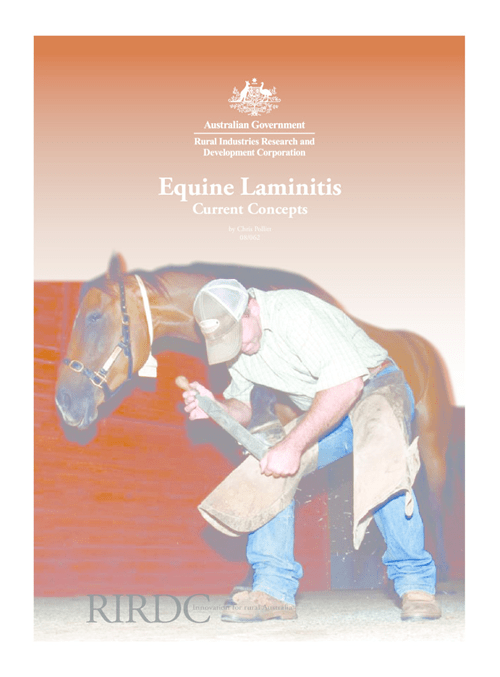The horse industry makes a significant economic and cultural contribution to Australia, and the maintenance of horse health and welfare is a primary concern of owners, trainers and veterinarians alike. Laminitis is a painful and devastating disease that can cripple a horse and end its productive life. There has been a considerable amount of research over recent years to try to understand laminitis, but scientists have struggled to reconcile the wide range of apparently unrelated factors which can trigger the condition.
This report describes four research projects that initially focussed on the developmental and acute stages of laminitis. The research teams involved in these projects included microbiologists, molecular biologists, pathologists, electron microscopists, physiologists and endocrinologists, and this unique critical mass has enabled significant contributions to the understanding of laminitis. As new knowledge accrued a successful preventive strategy, employing distal limb cryotherapy, was developed that is now the only scientifically proven laminitis preventive.
The importance of this report is that it provides an overview of laminitis for horse owners, veterinarians and scientists. It describes the anatomy, physiology and ultrastructure of the horse’s foot to form a basis for understanding the complex pathology that underpins the disease. It describes the radiology of the horse’s foot and introduces the new technique of retrograde venography.





